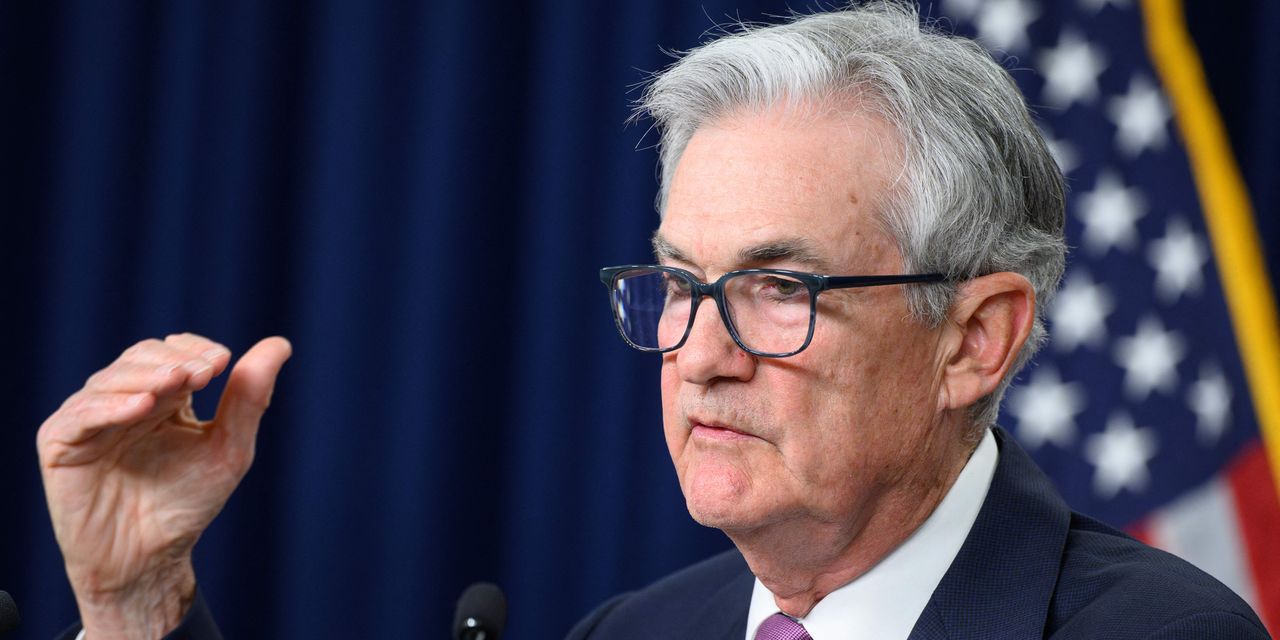The Federal Reserve remains narrowly focused on reining in inflation and will likely be raising rates further in the coming months, Chairman Jerome Powell told lawmakers on Wednesday, as he acknowledged that the quest to return the economy to price stability still has “a long way to go.”
In testimony before the House Financial Services Committee, Powell laid out the Fed’s case for holding rates steady in June, arguing that the decision was made because of the combination of the 5 percentage points of rate hikes so far, the “uncertain lags” with which monetary policy affects the economy, and the potential for tighter credit conditions to slow economic activity.
But he also made clear more policy tightening is on the way. “We never used the word ‘pause,’ and I wouldn’t use it here today,” Powell told lawmakers.
Instead, Powell suggested that the Fed’s updated forecasts, which were released after the policy meeting last week, offered a reasonable path forward for the central bank this year. Those projections showed that 16 of the 18 members of the policy committee expect another interest-rate hike, and a broad majority expect two more this year.
The latest median forecast shows officials now see the federal-funds rate hitting 5.6% by the end of the year, up from an expected 5.1% in March.
“I think that’s a pretty good guess of what will happen if the economy performs about as expected,” Powell said.
He also noted, however, that the Fed will be making decisions “meeting by meeting, based on the totality of incoming data and their implications for the outlook for economic activity and inflation, as well as the balance of risks.”
The Fed chair’s appearance on Capitol Hill—which is mandated as part of a semiannual report on monetary policy—comes as inflation remains more than double the bank’s target even after 10 straight interest-rate increases from the central bank. Core PCE, which is the Fed’s preferred inflation gauge, was up 4.7% year over year in April.
“Inflation has moderated somewhat since the middle of last year,” Powell said. “Nonetheless, inflation pressures continue to run high, and the process of getting inflation back down to 2% has a long way to go.”
Powell highlighted three economic conditions that will likely need to be in place before price growth can cool significantly: Economic growth will need to be “slower than modest,” supply chain bottlenecks will need to ease up, and labor supply and labor demand will need to rebalance.
“All of those things,” he said, “are happening much later and much more slowly than we would hope.”
Some lawmakers focused their questioning on Wednesday on the potential fallout from the Fed’s attempts to rein in inflation. Powell emphasized that the Fed remains committed to its goal of returning inflation to 2% despite the necessary trade-offs, arguing that the long-term payoff will be worth it.
“Price stability is the responsibility of the Federal Reserve, and without it, the economy does not work for anyone,” Powell said.
Asked specifically about whether the Fed considers the impact of its policy moves on low- and moderate-income communities, Powell emphasized that those families are the ones who will most benefit from a return to price stability.
“We think that the most important thing we need to do for working people is to get inflation back down under control,” Powell said. “Because it is people at the lower end of the income spectrum who suffer most immediately and worse from high inflation.”
Beyond inflation, several lawmakers pressed Powell on the topic of bank regulation and capital requirements in the aftermath of the failure of Silicon Valley Bank and others this spring. Powell largely stayed away from specifics on forthcoming regulatory changes or recommendations. He did, however, acknowledge that Silicon Valley Bank’s collapse made clear that “there is going to be a need for stronger supervision and also regulation for banks of that size.”
But he implied that the Fed will likely not be in favor of a one-size-fits-all approach to bank regulation.
“We benefit from having banks of all different shapes and sizes in our system,” Powell said. “And we want to be careful not to regulate the smaller banks to the point where, really, their business models are challenged for all but the largest banks.”
Powell will testify before the Senate Banking Committee on Thursday at 10 a.m.
Write to Megan Cassella at [email protected] and Megan Leonhardt at [email protected].
Read the full article here













